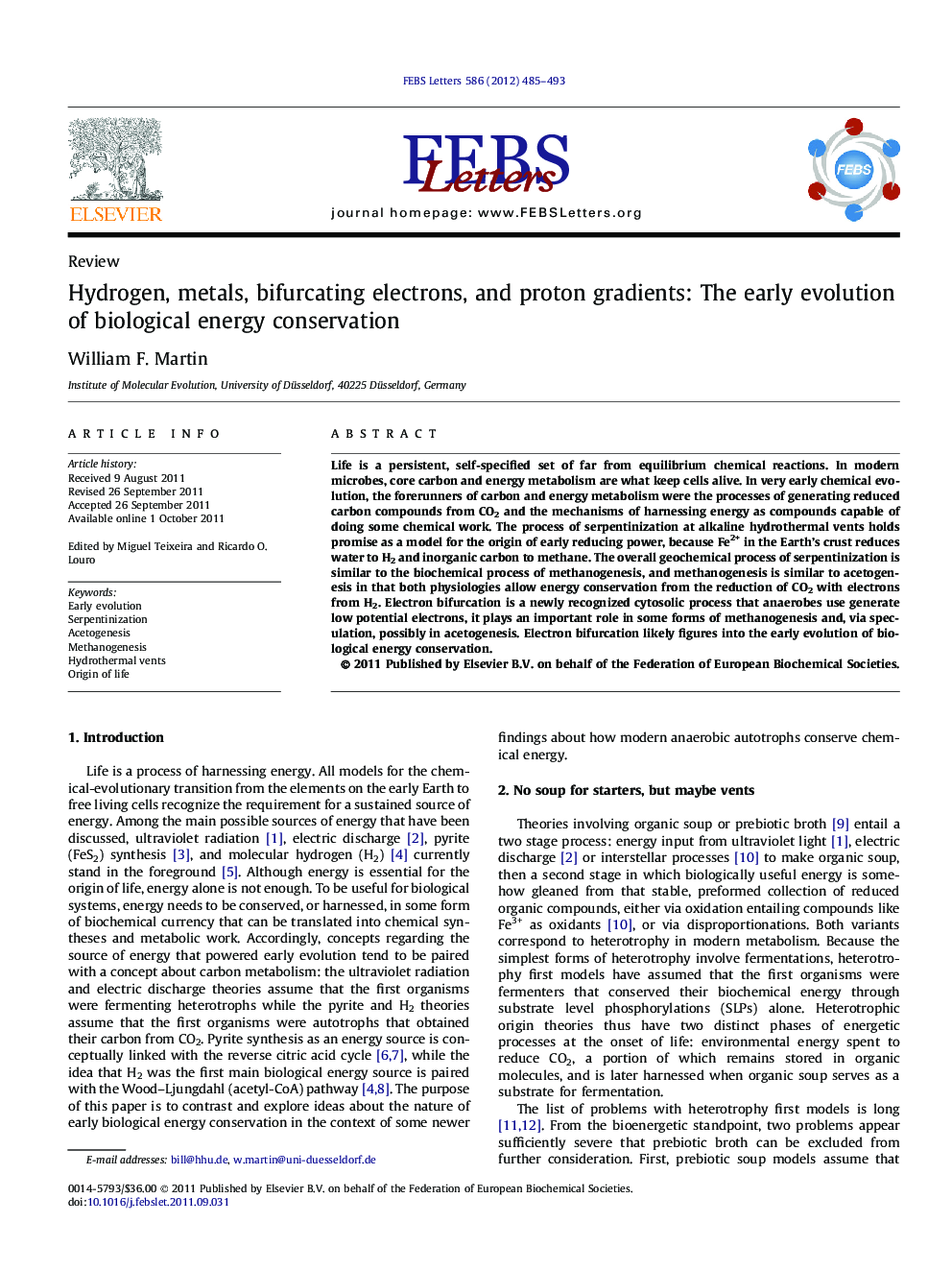| کد مقاله | کد نشریه | سال انتشار | مقاله انگلیسی | نسخه تمام متن |
|---|---|---|---|---|
| 10871802 | 1074085 | 2012 | 9 صفحه PDF | دانلود رایگان |
عنوان انگلیسی مقاله ISI
Hydrogen, metals, bifurcating electrons, and proton gradients: The early evolution of biological energy conservation
دانلود مقاله + سفارش ترجمه
دانلود مقاله ISI انگلیسی
رایگان برای ایرانیان
کلمات کلیدی
موضوعات مرتبط
علوم زیستی و بیوفناوری
علوم کشاورزی و بیولوژیک
دانش گیاه شناسی
پیش نمایش صفحه اول مقاله

چکیده انگلیسی
Life is a persistent, self-specified set of far from equilibrium chemical reactions. In modern microbes, core carbon and energy metabolism are what keep cells alive. In very early chemical evolution, the forerunners of carbon and energy metabolism were the processes of generating reduced carbon compounds from CO2 and the mechanisms of harnessing energy as compounds capable of doing some chemical work. The process of serpentinization at alkaline hydrothermal vents holds promise as a model for the origin of early reducing power, because Fe2+ in the Earth's crust reduces water to H2 and inorganic carbon to methane. The overall geochemical process of serpentinization is similar to the biochemical process of methanogenesis, and methanogenesis is similar to acetogenesis in that both physiologies allow energy conservation from the reduction of CO2 with electrons from H2. Electron bifurcation is a newly recognized cytosolic process that anaerobes use generate low potential electrons, it plays an important role in some forms of methanogenesis and, via speculation, possibly in acetogenesis. Electron bifurcation likely figures into the early evolution of biological energy conservation.
ناشر
Database: Elsevier - ScienceDirect (ساینس دایرکت)
Journal: FEBS Letters - Volume 586, Issue 5, 9 March 2012, Pages 485-493
Journal: FEBS Letters - Volume 586, Issue 5, 9 March 2012, Pages 485-493
نویسندگان
William F. Martin,